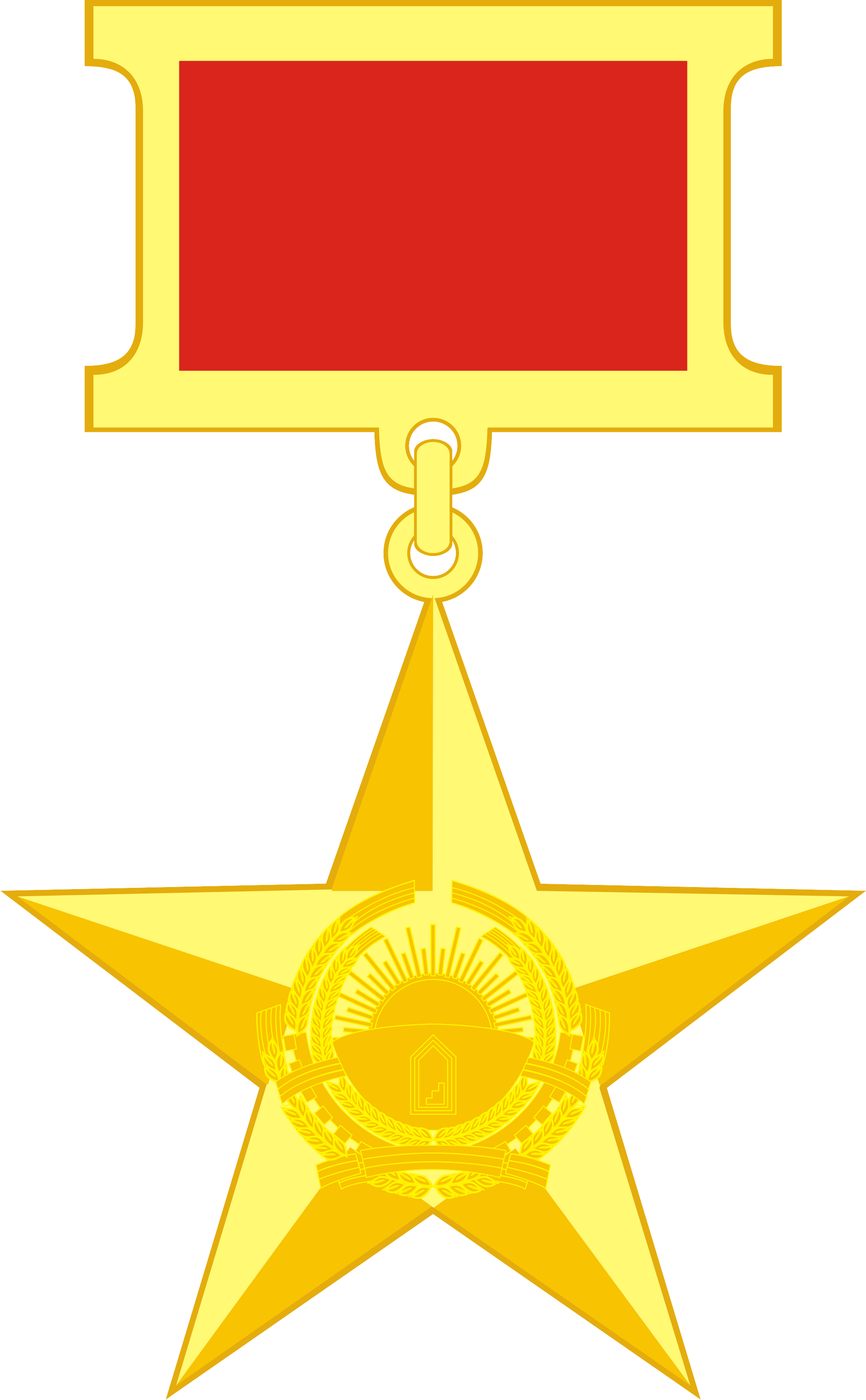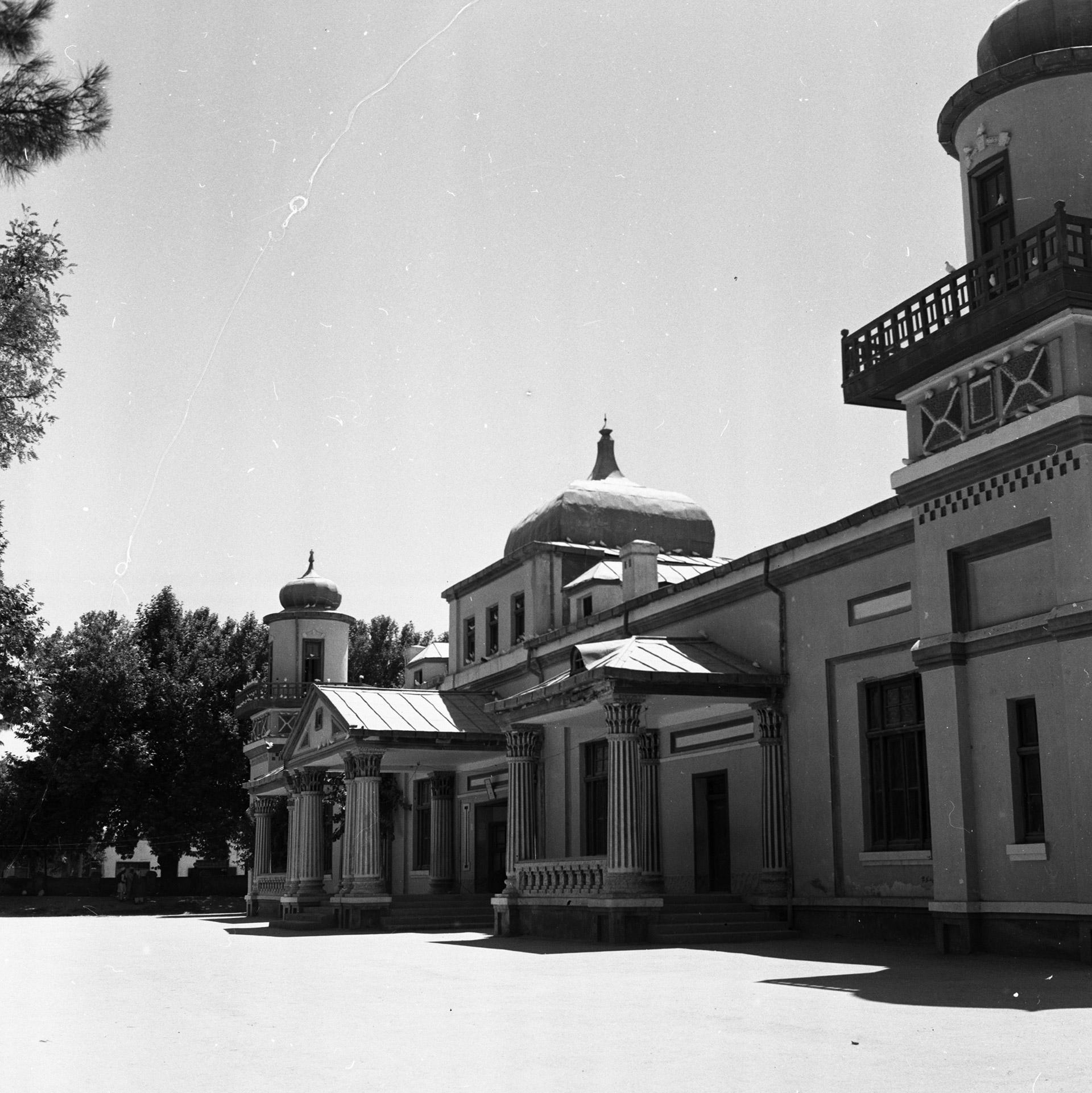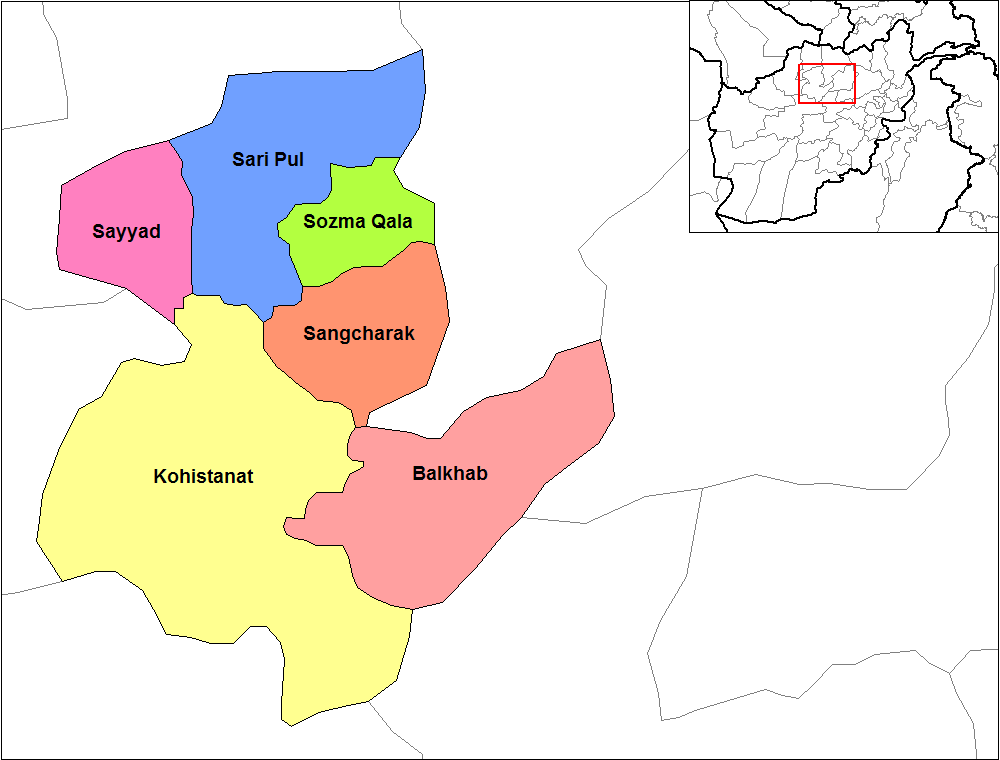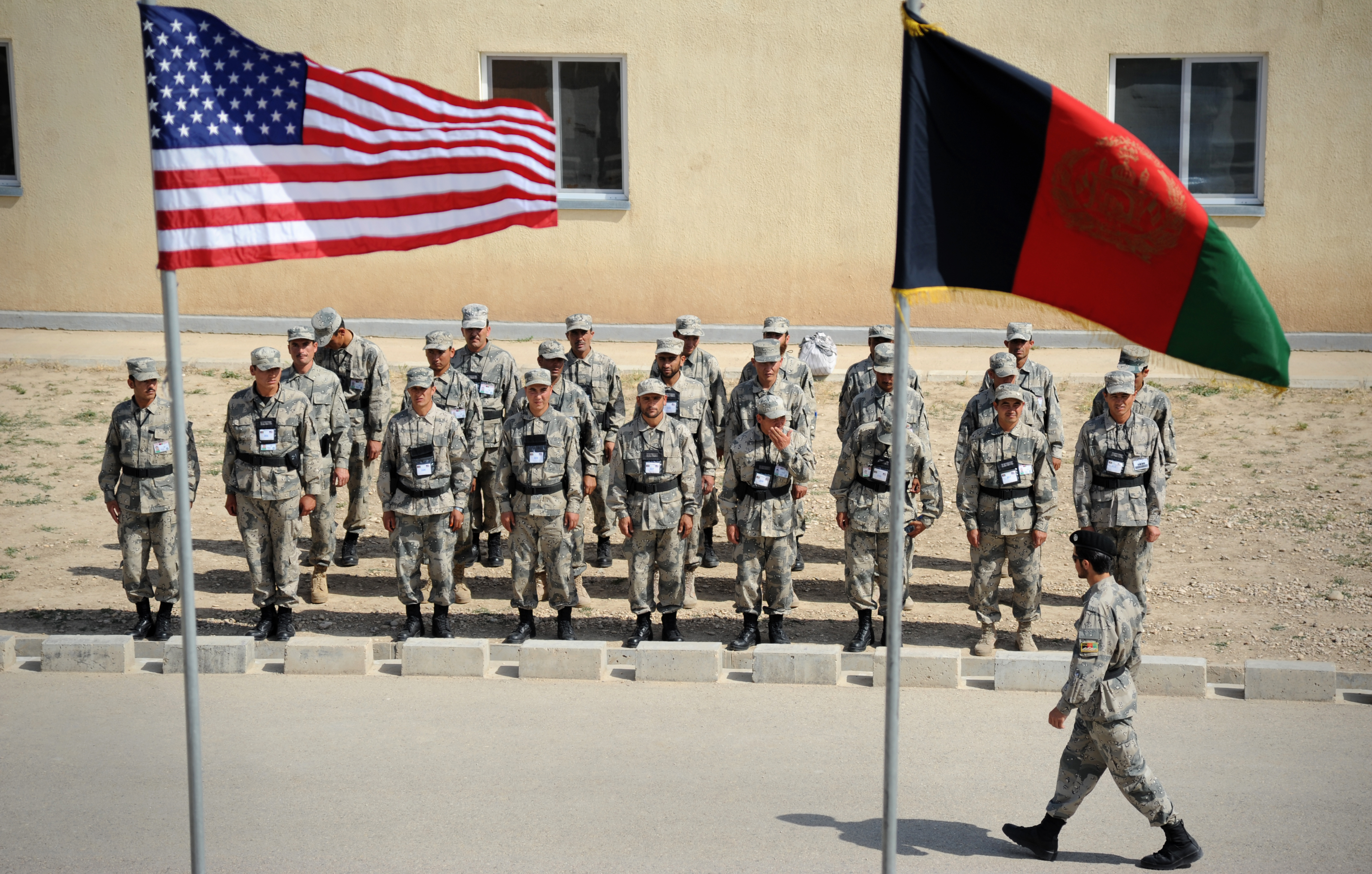|
Junbish-e Milli
The National Islamic Movement of Afghanistan (, ''Junbish-i-Milli Islami Afghanistan''), sometimes called simply Junbish, is a Turkic political party in Afghanistan. Its founder is Marshal Abdul Rashid Dostum who created it in 1992 made from his loyalist remnants from the People's Democratic Party of Afghanistan's communist government. It is described as "an organisation heavily peopled with former Communists and Islamists," and is regarded as somewhat secular and left-leaning. Its voter base is mostly Uzbeks, and it is strongest in Jowzjan, Balkh, Faryab, Sar-e Pol, and Samangan provinces. History Formation Junbish and its military wing, Division 53 started as a “self-defense unit” for the Sheberghan oil fields in northern Afghanistan, growing to a platoon and then a company until it grew to a division of about 40,000 men by 1989. This division joined the Afghan government and was referred to as Division 53. In 1988 Junbish forces replaced departing Soviet Union for ... [...More Info...] [...Related Items...] OR: [Wikipedia] [Google] [Baidu] |
Abdul Rashid Dostum
Abdul Rashid Dostum ( ; ; Uzbek language, Uzbek Uzbek alphabet, Latin: , Uzbek Uzbek alphabet, Cyrillic: , ; born 25 March 1954) is an Afghan former Officer (armed forces), military officer, warlord and exiled politician. He is the founder and leader of the Junbish-e Milli political party, and was a senior army officer in the military of the former Democratic Republic of Afghanistan, Afghan communist government during the Soviet–Afghan War, initially part of the Afghan Commando Forces. In 2001, Dostum became a key indigenous ally to the U.S. Special Forces and the CIA during the campaign to topple the Taliban government. He is one of the most powerful warlords since the beginning of the Afghan conflict, infamous for being an opportunist and siding with winners during Afghanistan's several civil wars. Dostum was also referred to as a kingmaker due to his significant role in politics of Afghanistan, Afghan politics. An ethnic Uzbek people, Uzbek from a peasant family in Jawzjan ... [...More Info...] [...Related Items...] OR: [Wikipedia] [Google] [Baidu] |
Turkic Peoples
Turkic peoples are a collection of diverse ethnic groups of West Asia, West, Central Asia, Central, East Asia, East, and North Asia as well as parts of Europe, who speak Turkic languages.. "Turkic peoples, any of various peoples whose members speak languages belonging to the Turkic subfamily...". "The Turkic peoples represent a diverse collection of ethnic groups defined by the Turkic languages." According to historians and linguists, the Proto-Turkic language originated in Central-East Asia, potentially in the Altai-Sayan region, Mongolia or Tuva.: "The ultimate Proto-Turkic homeland may have been located in a more compact area, most likely in Eastern Mongolia": "The best candidate for the Turkic Urheimat would then be northern and western Mongolia and Tuva, where all these haplogroups could have intermingled, rather than eastern and southern Mongolia..." Initially, Proto-Turkic speakers were potentially both hunter-gatherers and farmers; they later became nomadic Pastoralism, ... [...More Info...] [...Related Items...] OR: [Wikipedia] [Google] [Baidu] |
Soviet Union
The Union of Soviet Socialist Republics. (USSR), commonly known as the Soviet Union, was a List of former transcontinental countries#Since 1700, transcontinental country that spanned much of Eurasia from 1922 until Dissolution of the Soviet Union, it dissolved in 1991. During its existence, it was the list of countries and dependencies by area, largest country by area, extending across Time in Russia, eleven time zones and sharing Geography of the Soviet Union#Borders and neighbors, borders with twelve countries, and the List of countries and dependencies by population, third-most populous country. An overall successor to the Russian Empire, it was nominally organized as a federal union of Republics of the Soviet Union, national republics, the largest and most populous of which was the Russian SFSR. In practice, Government of the Soviet Union, its government and Economy of the Soviet Union, economy were Soviet-type economic planning, highly centralized. As a one-party state go ... [...More Info...] [...Related Items...] OR: [Wikipedia] [Google] [Baidu] |
Division 53 (Afghanistan)
Division may refer to: Mathematics *Division (mathematics), the inverse of multiplication *Division algorithm, a method for computing the result of mathematical division Military *Division (military), a formation typically consisting of 10,000 to 25,000 troops **Divizion, a subunit in some militaries *Division (naval), a collection of warships Science *Cell division, the process in which biological cells multiply *Continental divide, the geographical term for separation between watersheds *Division (taxonomy), used differently in botany and zoology *Division (botany), a taxonomic rank for plants or fungi, equivalent to phylum in zoology *Division (horticulture), a method of vegetative plant propagation, or the plants created by using this method * Division, a medical/surgical operation involving cutting and separation, see ICD-10 Procedure Coding System Technology *Beam compass, a compass with a beam and sliding sockets for drawing and dividing circles larger than those made by a ... [...More Info...] [...Related Items...] OR: [Wikipedia] [Google] [Baidu] |
Sheberghan
Sheberghān or Shaburghān or shāhpurgān ( Uzbek, Pashto, ), also spelled ''Shebirghan'' and ''Shibarghan'', is the capital city of the Jowzjan Province in northern Afghanistan. The city of Sheberghan has a population of 175,599. It has four districts and a total land area of 7,335 hectares. The total number of dwellings in Sheberghān is 19,511. In 2021, the Taliban gained control of the city during the 2021 Taliban offensive. Location Sheberghān is located along the Sari Pul River banks, about west of Mazar-i-Sharif on the national primary ring road that connects Kabul, Puli Khumri, Mazar-i-Sharif, Sheberghān, Maymana, Herat, Kandahar, Ghazni, and Maidan Shar. Sheberghān airport is situated between Sheberghān and Aqcha. Etymology The city's name is a corruption of its classical Persian name, Shaporgân, meaning "ingShapur's town". Shapur was the name of two Sasanian kings, both of whom built a great number of cities. However, Shapur I was the governor o ... [...More Info...] [...Related Items...] OR: [Wikipedia] [Google] [Baidu] |
Samangan Province
Samangan ( Persian: ; Pashto: ) is one of the thirty-four provinces of Afghanistan, located north of the Hindu Kush mountains in the central part of the country. The province covers and is surrounded by Sar-e Pol Province in the west, Balkh in the north, Baghlan in the east, and Bamyan in the south. Samangan province is divided into 7 districts and contains 674 villages. It has a population of about 325,000ref name=nsia/> which is Multiethnic society, multi-ethnic and mostly a rural society. The city of Aybak serves as the provincial capital. In 2021, the Taliban gained control of the province during the 2021 Taliban offensive. History The earliest known history of the province is linked to the identification of the Samangan by Aoros Ptolemy as the place of the Varni or Uarni and the fortified city of Samangan on the banks of the Khulm River identical to the Bhaktria regi on the Dargydus river south east of Zariaspa. The ruins found here established the city's founding by ... [...More Info...] [...Related Items...] OR: [Wikipedia] [Google] [Baidu] |
Sar-e Pol Province
Sar-e-Pol, also spelled Sari Pul (), is one of the thirty-four provinces of Afghanistan, located in the north of the country. It borders Ghor and Bamyan to the south, Samangan to the east, Balkh and Jowzjan to the north, and Faryab to the west. The province is divided into 7 districts and contains 896 villages. It has a population of about 632,000, which is multi-ethnic and mostly a tribal society. The province was created in 1988 with the support of northern Afghan politician Sayed Nasim Mihanparast. The city of Sar-e-Pol serves as the provincial capital. In 2021, the Taliban gained control of the province during the 2021 Taliban offensive. History Between the early 16th and the mid-18th century, the territory was ruled by the Khanate of Bukhara. It was given to Ahmad Shah Durrani by Murad Beg of Bukhara after a treaty was signed in about 1750 and became part of the Durrani Empire. It was ruled by the Durranis, followed by the Barakzai dynasty. The area was untouche ... [...More Info...] [...Related Items...] OR: [Wikipedia] [Google] [Baidu] |
Faryab Province
Faryab (Dari,Pashto : فاریاب) is one of the thirty-four provinces of Afghanistan, which is located in the north of the country bordering neighboring Turkmenistan. It has a population of about 1,109,223, which is multi-ethnic and mostly a tribal society. The province encompasses 15 districts and over 1,000 villages. The capital of Faryab province is Maymana. It also borders Jowzjan Province, Sar-e Pol Province, Ghor Province and Badghis Province. History Faryab is a Persian toponym meaning "lands irrigated by diversion of river water". The name Faryab takes its name from a town founded in the area by the Sassanids. It is the home town of the famed Islamic philosopher, al-Farabi (per the biographer Ibn al-Nadim). The area is part of the trans-border region of Greater Khorasan; during the colonial era, British geographers referred to the area as Afghan Turkestan. The history of settlement in Faryab is ancient and comprises layer upon layer of occupation. At times, it ... [...More Info...] [...Related Items...] OR: [Wikipedia] [Google] [Baidu] |
Balkh Province
Balkh (Dari and , ) is one of the 34 provinces of Afghanistan, located in the north of the country. It is divided into 15 districts and has a population of about 1,509,183, which is multi-ethnic and mostly a Persian-speaking society. The city of Mazar-i-Sharif is the capital and largest city of the province. The Mawlana Jalaluddin Mohammad Balkhi International Airport and Camp Marmal sit on the eastern edge of Mazar-i-Sharif. Balkh, also called Vazīrābād, the name of the province is derived from the ancient city of Balkh, near the modern town. The city of Mazar-e-Sharif has been an important stop on the trade routes from the Far East to the Middle East, the Mediterranean and Europe. Home to the famous blue mosque, it was once destroyed by Genghis Khan but later rebuilt by Timur. The city of Balkh and the area of Balkh Province were considered a part of various historical regions in history including Ariana and Greater Khorasan. The province serves today as Afghanistan's ... [...More Info...] [...Related Items...] OR: [Wikipedia] [Google] [Baidu] |
Jowzjan Province
Jowzjan, sometimes spelled Jawzjan or Jowzjan () is one of the thirty-four provinces of Afghanistan, located in the north of the country bordering neighboring Turkmenistan. The province is divided into 11 districts and contains hundreds of villages. It has a population of about 613,481 residents, which is a multi-ethnic society. Sheberghan is the capital of Jowzjan province. Etymology It is thought that the name is an Arabicized version of the Persian word gowzgān "(Land of) Walnuts". History The province is named after the early medieval region and principality of Juzjan. Between the early 16th century and mid-18th century, the area was ruled by the Khanate of Bukhara. It was conquered by Ahmad Shah Durrani and became part of the Durrani Empire in or about 1750, which formed to the modern state of Afghanistan. The area was untouched by the British during the three Anglo-Afghan wars that were fought in the 19th and 20th centuries. Recent history Following a series of chang ... [...More Info...] [...Related Items...] OR: [Wikipedia] [Google] [Baidu] |
Uzbeks
The Uzbeks () are a Turkic peoples, Turkic ethnic group native to Central Asia, being among the largest Turkic ethnic groups in the area. They comprise the majority population of Uzbekistan, next to Kazakhs, Kazakh and Karakalpaks, Karakalpak minorities, and also form minority groups in Afghanistan, Tajikistan, Kyrgyzstan, Kazakhstan, Turkmenistan, Russia, and China. Uzbek diaspora communities also exist in Uzbeks in Turkey, Turkey, Saudi Arabia, Uzbek Americans, United States, Ukraine, Uzbeks in Pakistan, Pakistan, and other countries. Etymology The origin of the word ''Uzbek'' is disputed. One view holds that it is eponymously named after Oghuz Khagan, also known as ''Oghuz Beg'', became the word ''Uzbeg'' or ''Uzbek''.A. H. Keane, A. Hingston Quiggin, A. C. Haddon, Man: Past and Present, p.312, Cambridge University Press, 2011, Google Books, quoted: "Who take their name from a mythical Uz-beg, Prince Uz (beg in Turki=a chief, or hereditary ruler)." Another theory states th ... [...More Info...] [...Related Items...] OR: [Wikipedia] [Google] [Baidu] |
Jane's Intelligence Review
''Jane's Intelligence Review'' was a monthly journal on global security and stability issues published by Jane's Information Group. Its coverage includes international security issues, state stability, terrorism and insurgency, ongoing conflicts, organized crime, and weapons proliferation. History ''Jane's Soviet Intelligence Review'' (1989–1991) It was first published in January 1989 as ''Jane's Soviet Intelligence Review'', although a pilot edition had been produced in September the previous year and distributed at the Farnborough Airshow in order to test the market. Uniquely for Jane's—and its then parent company, the Thomson Corporation—the magazine carried no advertising but relied on subscription revenue only. It was profitable in its first year of publication and is believed to have remained profitable ever since. Among the first subscribers were the then vice-president of the United States, Dan Quayle, and the author Tom Clancy. Included in the January 1989 issue w ... [...More Info...] [...Related Items...] OR: [Wikipedia] [Google] [Baidu] |







